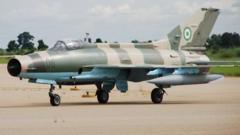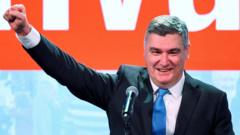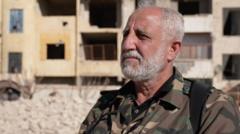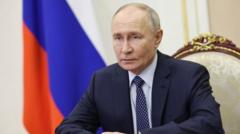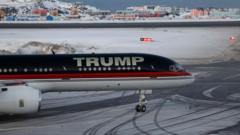With over 125,800 Russian soldiers estimated lost, the ongoing military conflict in Ukraine underscores the costs of Russia's aggressive advance, which employs 'meat-grinder' tactics at a devastating human price. Meanwhile, both Russia and Ukraine face their own challenges regarding manpower and weaponry.
Russia's Tactical Advances in Ukraine Highlight Dire Human Cost and Strategic Consequences
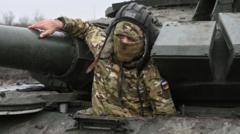
Russia's Tactical Advances in Ukraine Highlight Dire Human Cost and Strategic Consequences
As Russian forces continue their tactical push in eastern Ukraine, the dramatic increase in casualties has sparked concerns about the sustainability of such operations.
As 2024 begins to unfold, Russia remains committed to advancing its military operations in eastern Ukraine, with significant territorial gains recorded. As of now, approximately 2,350 square kilometers (or 907 square miles) across eastern Ukraine and the Kursk region have come under Russian control. However, this territorial success comes with an alarming toll; the Russian military has experienced unprecedented losses.
In November 2023 alone, the UK Defense Ministry reported that Russian casualties exceeded 45,680, marking the deadliest month for Moscow since its invasion commenced in February 2022. Recent estimates note that daily losses have surged, with over 1,523 soldiers killed or wounded each day. On November 28th, a shocking loss of over 2,000 soldiers in a single day was recorded. These casualty figures, derived from a combination of open-source data and classified intelligence, project total losses of approximately 125,800 Russian soldiers during the autumn offensives, according to the Institute for the Study of War (ISW).
The ISW points out that Russia's "meat-grinder" tactics reflect a strategy that results in a staggering ratio of more than 50 soldiers lost for every square kilometer seized from Ukraine. This brutal approach to warfare continues to draw criticisms regarding its sustainability and moral implications.
In contrast, the Ukrainian military remains under tremendous strain from ongoing hostilities. Although Kyiv refrains from publicly disclosing its military losses, estimates from varied sources suggest significant casualties. Ukrainian President Volodymyr Zelensky recently dismissed claims of up to 80,000 Ukrainian military deaths, asserting that the reality is "much less," although no specific figures were offered.
Western officials observing the conflict indicate no signs that the intensity of fighting will abate. Reports suggest that Russian forces, leveraging overwhelming numbers, are expected to persist in their offensive, challenging Ukrainian defenses. However, changes in relative artillery firepower have emerged, making once-dominant Russian artillery less decisive. The previously skewed ratio, which was as high as 13 Russian rounds for every Ukrainian response, has now shifted to approximately 1.5 to 1 due to increased Ukrainian production and successful counterattacks.
The tactical landscape has also shifted with the increased deployment of glide bombs and drones, significantly impacting both sides' military capabilities. One Western military official noted a tenfold rise in glide bomb usage by Russian forces, which deliver devastating effects on battlefronts.
While both Russia and Ukraine wrestle with their manpower needs, their approaches differ significantly. Ukraine has opted to maintain a higher conscription age, leaving many younger citizens untouched unless they volunteer for service. Conversely, Russia has managed to replenish its losses, though President Vladimir Putin's hesitation to initiate a new mobilization cycle reflects growing domestic pressures, including inflation and issues related to bereavement compensations.
Amid these challenges, the Russian government's offer of substantial rewards for volunteer fighters has raised concerns about social dynamics within Russia, where bonuses could reach up to three million roubles (approximately $30,000). This shift indicates ongoing strains within the Russian economy, compounded by international commitments, such as those in Syria, that may stretch resources thin.
As the situation evolves, both nations face uncertain futures on their military fronts, with the potential ramifications of international events further influencing the conflict trajectory in Ukraine.

